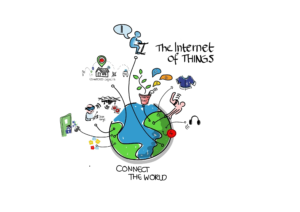How to Dispose of Old Electronics While Keeping Your Data Safe
How to Dispose of Old Electronics While Keeping Your Data Safe is a crucial concern in today’s digital age. Imagine a scenario where your old laptop, filled with years of personal data, ends up in the wrong hands. This is a very real threat, and proper disposal methods are paramount to safeguarding sensitive information and promoting responsible environmental practices. This comprehensive guide will equip you with the knowledge and tools to effectively dispose of old electronics while maintaining the utmost data security. We’ll explore various methods, from secure data deletion to responsible recycling practices. The structure of this guide follows a logical progression, starting with the fundamental steps for ensuring your data’s security and moving into responsible recycling practices.
Understanding the Importance of Secure Data Disposal
The Risk of Data Breaches
Millions of people worldwide rely on electronic devices for everything from work and finances to personal communication and entertainment. These devices often store vast amounts of personal and sensitive data. If not disposed of properly, old electronics can fall into the wrong hands, exposing this data to breaches, theft, or unauthorized access. This could lead to significant financial loss, identity theft, and emotional distress. Consider a scenario where a discarded laptop contains confidential business documents or sensitive financial records – the repercussions of unauthorized access could be devastating.
Protecting Your Privacy and Security
Protecting your data privacy is paramount, and secure data disposal is a crucial aspect of this. This involves more than simply throwing away old devices. It’s about actively ensuring that sensitive information is no longer accessible. A proactive approach towards data security will protect you from potential risks associated with data breaches and will also set an example for others. Many organizations have strict policies on how to handle confidential or protected health information to avoid penalties, and individuals should adopt similar measures.
Choosing the Right Disposal Method
Data Sanitization: The Foundation of Security
Before disposing of any electronic device, thorough data sanitization is essential. This process involves securely deleting all data from the device’s hard drive. This ensures that even with advanced recovery tools, unauthorized individuals cannot access your personal information. Specialized software or command-line tools can be used for this purpose. The process erases all traces of the data making it truly inaccessible. A thorough data wipe should be considered as a minimum standard.
Methods of Data Sanitization
Various data sanitization methods are available, from specialized software to physical destruction. For personal use, software-based sanitization is often sufficient and allows for simple, controllable deletion.
- Overwriting: This involves writing new data repeatedly over the existing information. This effectively destroys the original data, making it virtually impossible to recover.
- Secure Deletion: Advanced software packages designed for secure data deletion are available, offering levels of security that address more sophisticated methods of retrieving information. These solutions are often employed by organizations handling sensitive data.
- Physical Destruction: In situations involving highly sensitive data or a high risk of compromise, physically destroying the hard drive might be necessary. This method usually involves crushing or shredding the device to make it impossible to recover any data. The level of risk and value of the information should dictate the method of choice.
Responsible Recycling and Disposal Practices
Recycling Programs and Centers
Many communities offer recycling programs for electronic devices. These programs often partner with organizations specializing in e-waste recycling, ensuring that components are properly processed to extract valuable materials for reuse. This approach not only protects your data but also promotes sustainable practices. Recycling programs often offer drop-off locations for various electronic devices, streamlining the process for individuals.
Legal and Ethical Considerations
Compliance Regulations
Organizations handling sensitive data often need to comply with specific legal requirements regarding data security and disposal. Understanding these regulations is crucial to avoid potential penalties. Compliance is not only about legal obligations but also about creating a culture of responsible disposal. Organizations that prioritize data security and proper disposal methods enhance their reputation and build trust. These regulations and considerations apply to individuals with significant amounts of data or for data that is legally or contractually required to be removed and disposed of properly.
Related Post : A Beginner’s Guide to Learning Python Programming
Understanding Data Recovery Risks
The Persistence of Data
The potential for data recovery is a concern when disposing of electronics. Even with seemingly thorough data removal, the possibility for recovery remains – although the risks are mitigated. Factors like the type of hard drive, the method of disposal, and the skill level of those trying to recover the data can determine the ease and success of data recovery.
Additional Tips and Resources
Seeking Professional Advice
For sensitive data, consider seeking advice from IT professionals or data security specialists to tailor your disposal strategy. They can suggest advanced or specialized data sanitization options or guide your decisions about disposing of a complex system.
Case Studies
Real-World Examples
Many companies and individuals have faced data breaches and financial losses due to improper disposal of electronic devices. Analyzing these cases can highlight the importance of consistent and safe procedures for data deletion before disposal. By learning from others’ experiences, you can avoid similar situations. A few examples can illustrate the severity of data breaches and the potential for loss from improper disposal. These examples serve as a call to action for the importance of implementing proper data disposal and safety practices.
The Environment: An Added Layer of Responsibility
E-waste and Sustainability
Discarded electronics contribute to e-waste, posing environmental challenges. Recycling programs mitigate some of these impacts by reclaiming valuable components for reuse. When disposing of old electronics, consider the environmental impact of your actions and participate in sustainable practices whenever possible.
Long-Term Data Security Best Practices
Maintaining Security Beyond Disposal
Implementing policies and measures that support your continued data security can protect you beyond simply disposing of old devices. This approach may include regular data backups, strong passwords, and security software to guard against future threats. Proactive measures that protect your data beyond disposal can offer peace of mind and long-term protection against loss.
In conclusion, safely disposing of old electronics while protecting your data is crucial. By following the steps outlined above, you can ensure your sensitive information remains confidential and contribute to a more sustainable environment. Remember to always prioritize data security and choose reputable disposal methods. If you’re unsure about any step, consult with a professional or seek guidance from online resources. Let’s work together to protect our data and the planet.
Share this content:














Post Comment